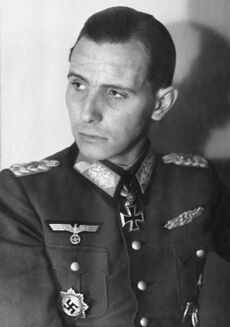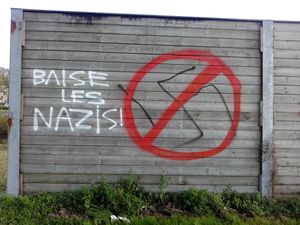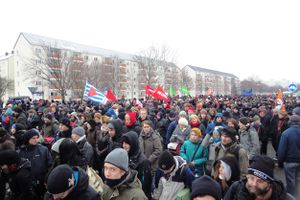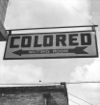النازية الجديدة
| جزء من سلسلة مقالات عن |
| النازية |
|---|
 |
| مرتبطة بسلسلة مقالات عن السياسة والانتخاات وجزء منسلسلة المقالات السياسية عن |
| الفاشية الجديدة |
|---|
 |
|
بوابة فاشية بوابة سياسة |
| معاداة السامية |
|---|
 |
| التاريخ • خط زمني • مراجع |
| جزء من سلسلة عن |
| الإرهاب |
|---|
النازية الجديدة Neo-Nazism، تتألف من حركات مسلحة واجتماعية وسياسية في أعقاب الحرب العالمية الثانية تسعى لإحياء المبادئ اليمينية المتطرفة للنازية. Neo-Nazis employ their ideology to promote hatred and racial supremacy (often white supremacy), to attack racial and ethnic minorities (often antisemitism and Islamophobia), and in some cases to create a fascist state.[1][2]
Neo-Nazism is a global phenomenon, with organized representation in many countries and international networks. It borrows elements from Nazi doctrine, including antisemitism, ultranationalism, racism, xenophobia, ableism, homophobia, anti-communism, and creating a "Fourth Reich". Holocaust denial is common in neo-Nazi circles.
Neo-Nazis regularly display Nazi symbols and express admiration for Adolf Hitler and other Nazi leaders. In some European and Latin American countries, laws prohibit the expression of pro-Nazi, racist, antisemitic, or homophobic views. Nazi-related symbols are banned in many European countries (especially Germany) in an effort to curtail neo-Nazism.[3]
Definition
The term neo-Nazism describes any post-World War II militant, social or political movements seeking to revive the ideology of Nazism in whole or in part.[4][5]
The term 'neo-Nazism' can also refer to the ideology of these movements, which may borrow elements from Nazi doctrine, including ultranationalism, anti-communism, racism, ableism, xenophobia, homophobia, antisemitism, up to initiating the Fourth Reich. Holocaust denial is a common feature, as is the incorporation of Nazi symbols and admiration of Adolf Hitler.
Neo-Nazism is considered a particular form of far-right politics and right-wing extremism.[6]
Hyperborean racial doctrine
Neo-Nazi writers have posited a spiritual, esoteric doctrine of race, which moves beyond the primarily Darwinian-inspired materialist scientific racism popular mainly in the Anglosphere during the 20th century. Figures influential in the development of neo-Nazi racism,[بحاجة لمصدر] such as Miguel Serrano and Julius Evola (writers who are described by critics of Nazism such as the Southern Poverty Law Center as influential within what it presents as parts of "the bizarre fringes of National Socialism, past and present"),[7] claim that the Hyperborean ancestors of the Aryans were in the distant past, far higher beings than their current state, having suffered from "involution" due to mixing with the "Telluric" peoples; supposed creations of the Demiurge. Within this theory, if the "Aryans" are to return to the Golden Age of the distant past, they need to awaken the memory of the blood. An extraterrestrial origin of the Hyperboreans is often claimed. These theories draw influence from Gnosticism and Tantrism, building on the work of the Ahnenerbe. Within this racist theory, Jews are held up as the antithesis of nobility, purity and beauty.
Ecology and environmentalism
Neo-Nazism generally aligns itself with a blood and soil variation of environmentalism, which has themes in common with deep ecology, the organic movement and animal protectionism.[8][9] This tendency, sometimes called "ecofascism", was represented in the original German Nazism by Richard Walther Darré who was the Reichsminister of Food from 1933 until 1942.[10]
History
Germany and Austria, 1945–1950s
Following the defeat of Nazi Germany, the political ideology of the ruling party, Nazism, was in complete disarray. The final leader of the National Socialist German Workers' Party (NSDAP) was Martin Bormann. He died on 2 May 1945 during the Battle of Berlin, but the Soviet Union did not reveal his death to the rest of the world, and his ultimate fate remained a mystery for many years. Conspiracy theories emerged about Hitler himself, that he had secretly survived the war and fled to South America or elsewhere.
The Allied Control Council officially dissolved the NSDAP on 10 October 1945, marking the end of "Old" Nazism. A process of denazification began, and the Nuremberg trials took place, where many major leaders and ideologues were condemned to death by October 1946, others committed suicide.
In both the East and West, surviving ex-party members and military veterans assimilated to the new reality and had no interest in constructing a "neo-Nazism".[بحاجة لمصدر] However, during the 1949 West German elections a number of Nazi advocates such as Fritz Rössler had infiltrated the national conservative Deutsche Rechtspartei, which had 5 members elected. Rössler and others left to found the more radical Socialist Reich Party (SRP) under Otto Ernst Remer. At the onset of the Cold War, the SRP favoured the Soviet Union over the United States.[بحاجة لمصدر]
In Austria, national independence had been restored, and the Verbotsgesetz 1947 explicitly criminalised the NSDAP and any attempt at restoration. West Germany adopted a similar law to target parties it defined as anti-constitutional; Article 21 Paragraph 2 in the Basic Law, banning the SRP in 1952 for being opposed to liberal democracy.
As a consequence, some members of the nascent movement of German neo-Nazism joined the Deutsche Reichspartei of which Hans-Ulrich Rudel was the most prominent figure. Younger members founded the Wiking-Jugend modelled after the Hitler Youth. The Deutsche Reichspartei stood for elections from 1953 until 1961 fetching around 1% of the vote each time.[بحاجة لمصدر] Rudel befriended French-born Savitri Devi, who was a proponent of Esoteric Nazism. In the 1950s she wrote a number of books, such as Pilgrimage (1958), which concerns prominent Third Reich sites, and The Lightning and the Sun (1958), in which she claims that Adolf Hitler was an avatar of the God Vishnu. She was not alone in this reorientation of Nazism towards its Thulean-roots; the Artgemeinschaft, founded by former SS member Wilhelm Kusserow, attempted to promote a new paganism.[بحاجة لمصدر] In the German Democratic Republic (East Germany) a former member of SA, Wilhelm Adam, founded the National Democratic Party of Germany. It reached out to those attracted by the Nazi Party before 1945 and provide them with a political outlet, so that they would not be tempted to support the far-right again or turn to the anti-communist Western Allies.[بحاجة لمصدر] Joseph Stalin wanted to use them to create a new pro-Soviet and anti-Western strain in German politics.[11] According to top Soviet diplomat Vladimir Semyonov, Stalin even suggested that they could be allowed to continue publishing their own newspaper, Völkischer Beobachter.[11] While in Austria, former SS member Wilhelm Lang founded an esoteric group known as the Vienna Lodge; he popularised Nazism and occultism such as the Black Sun and ideas of Third Reich survival colonies below the polar ice caps.[بحاجة لمصدر]
With the onset of the Cold War, the allied forces had lost interest in prosecuting anyone as part of the denazification.[12] In the mid-1950s this new political environment allowed Otto Strasser, an NS activist on the left of the NSDAP, who had founded the Black Front to return from exile. In 1956, Strasser founded the German Social Union as a Black Front successor, promoting a Strasserite "nationalist and socialist" policy, which dissolved in 1962 due to lack of support. Other Third Reich associated groups were the HIAG and Stille Hilfe dedicated to advancing the interests of Waffen-SS veterans and rehabilitating them into the new democratic society. However, they did not claim to be attempting to restore Nazism, instead working with the social democrats and Christian democrats.
Many bureaucrats who served under the Third Reich continued to serve in German administration after the war. According to the Simon Wiesenthal Center, many of the more than 90,000 Nazi war criminals recorded in German files were serving in positions of prominence under Chancellor Konrad Adenauer.[13][14] Not until the 1960s were the former concentration camp personnel prosecuted by West Germany in the Belzec trial, Frankfurt Auschwitz trials, Treblinka trials, Chełmno trials, and the Sobibór trial.[15] However, the government had passed laws prohibiting Nazis from publicly expressing their beliefs.
"Universal National Socialism", 1950s–1970s
هذا القسم يحتاج المزيد من الأسانيد للتحقق. (May 2022) (Learn how and when to remove this template message) |
Neo-Nazism found expression outside of Germany, including in countries who fought against the Third Reich during the Second World War, and sometimes adopted pan-European or "universal" characteristics, beyond the parameters of German nationalism.[بحاجة لمصدر] The two main tendencies, with differing styles and even worldviews, were the followers of the American Francis Parker Yockey, who was fundamentally anti-American and advocated for a pan-European nationalism, and those of George Lincoln Rockwell, an American conservative.[nb 1][بحاجة لمصدر]
Yockey, a neo-Spenglerian author, had written Imperium: The Philosophy of History and Politics (1949) dedicated to "the hero of the twentieth century" (namely, Adolf Hitler) and founded the European Liberation Front. He was interested more in the destiny of Europe; to this end, he advocated a National Bolshevik-esque red-brown alliance against American culture and influenced 1960s figures such as SS-veteran Jean-François Thiriart. Yockey was also fond of Arab nationalism, in particular Gamal Abdel Nasser, and saw Fidel Castro's Cuban Revolution as a positive, visiting officials there. Yockey's views impressed Otto Ernst Remer and the radical traditionalist philosopher Julius Evola. He was constantly hounded by the FBI and was eventually arrested in 1960, before committing suicide. Domestically, Yockey's biggest sympathisers were the National Renaissance Party, including James H. Madole, H. Keith Thompson and Eustace Mullins (protégé of Ezra Pound) and the Liberty Lobby of Willis Carto.[بحاجة لمصدر]
Rockwell, an American conservative, was first politicised in the anti-communism and anti-racial integration movements before becoming anti-Jewish. In response to his opponents calling him a "Nazi", he theatrically appropriated the aesthetic elements of the NSDAP, to "own" the intended insult. In 1959, Rockwell founded the American Nazi Party and instructed his members to dress in imitation SA-style brown shirts, while flying the flag of the Third Reich. In contrast to Yockey, he was pro-American and cooperated with FBI requests, despite the party being targeted by COINTELPRO due to the mistaken belief that they were agents of Nasser's Egypt during a brief intelligence "brown scare".[nb 2] Later leaders of American white nationalism came to politics through the ANP, including a teenage David Duke and William Luther Pierce of the National Alliance, although they soon distanced themselves from explicit self-identification with neo-Nazism.[بحاجة لمصدر]
In 1961, the World Union of National Socialists was founded by Rockwell and Colin Jordan of the British National Socialist Movement, adopting the Cotswold Declaration. French socialite Françoise Dior was involved romantically with Jordan and his deputy John Tyndall and a friend of Savitri Devi, who also attended the meeting. The National Socialist Movement wore quasi-SA uniforms, was involved in streets conflicts with the Jewish 62 Group. In the 1970s, Tyndall's earlier involvement with neo-Nazism would come back to haunt the National Front, which he led, as they attempted to ride a wave of anti-immigration populism and concerns over British national decline. Televised exposes on This Week in 1974 and World in Action in 1978, showed their neo-Nazi pedigree and damaged their electoral chances. In 1967, Rockwell was killed by a disgruntled former member. Matthias Koehl took control of the ANP, and strongly influenced by Savitri Devi, gradually transformed it into an esoteric group known as the New Order.[بحاجة لمصدر]
In Franco's Spain, certain SS refugees most notably Otto Skorzeny, Léon Degrelle and the son of Klaus Barbie became associated with CEDADE (Círculo Español de Amigos de Europa), an organisation which disseminated Third Reich apologetics out of Barcelona. They intersected with neo-Nazi advocates from Mark Fredriksen in France to Salvador Borrego in Mexico. In the post-fascist Italian Social Movement splinter groups such as Ordine Nuovo and Avanguardia Nazionale, involved in the "Years of Lead" considered Nazism a reference. Franco Freda created a "Nazi-Maoist" synthesis.
In Germany itself, the various Third Reich nostalgic movements coalesced around the National Democratic Party of Germany in 1964 and in Austria the National Democratic Party in 1967 as the primary sympathisers of the NSDAP past, although more publicly cautious than earlier groups.[بحاجة لمصدر]
Holocaust denial and subcultures, 1970s–1990s
Holocaust denial, the claim that six million Jews were not deliberately and systematically exterminated as an official policy of the Third Reich and Adolf Hitler, became a more prominent feature of neo-Nazism in the 1970s. Before this time, Holocaust denial had long existed as a sentiment among neo-Nazis, but it had not yet been systematically articulated as a theory with a bibliographical canon. Few of the major theorists of Holocaust denial (who call themselves "revisionists") can be uncontroversially classified as outright neo-Nazis (though some works such as those of David Irving forward a clearly sympathetic view of Hitler and the publisher Ernst Zündel was deeply tied to international neo-Nazism), however, the main interest of Holocaust denial to neo-Nazis was their hope that it would help them rehabilitate their political ideology in the eyes of the general public. Did Six Million Really Die? (1974) by Richard Verrall and The Hoax of the Twentieth Century (1976) by Arthur Butz are popular examples of Holocaust denial material.

Key developments in international neo-Nazism during this time include the radicalisation of the Vlaamse Militanten Orde under former Hitler Youth member Bert Eriksson. They began hosting an annual conference; the "Iron Pilgrimage"; at Diksmuide, which drew kindred ideologues from across Europe and beyond. As well as this, the NSDAP/AO under Gary Lauck arose in the United States in 1972 and challenged the international influence of the Rockwellite WUNS. Lauck's organisation drew support from the National Socialist Movement of Denmark of Povl Riis-Knudsen and various German and Austrian figures who felt that the "National Democratic" parties were too bourgeois and insufficiently Nazi in orientation. This included Michael Kühnen, Christian Worch, Bela Ewald Althans and Gottfried Küssel of the 1977-founded ANS/NS which called for the establishment of a Germanic Fourth Reich. Some ANS/NS members were imprisoned for planning paramilitary attacks on NATO bases in Germany and planning to liberate Rudolf Hess from Spandau Prison. The organisation was officially banned in 1983 by the Minister of the Interior.
During the late 1970s, a British subculture came to be associated with neo-Nazism; the skinheads. Portraying an ultra-masculine, crude and aggressive image, with working-class references, some of the skinheads joined the British Movement under Michael McLaughlin (successor of Colin Jordan), while others became associated with the National Front's Rock Against Communism project which was meant to counter the SWP's Rock Against Racism. The most significant music group involved in this project was Skrewdriver, led by Ian Stuart Donaldson. Together with ex-BM member Nicky Crane, Donaldson founded the international Blood & Honour network in 1987. By 1992 this network, with input from Harold Covington, had developed a paramilitary wing; Combat 18, which intersected with football hooligan firms such as the Chelsea Headhunters. The neo-Nazi skinhead movement spread to the United States, with groups such as the Hammerskins. It was popularised from 1986 onwards by Tom Metzger of the White Aryan Resistance. Since then it has spread across the world. Films such as Romper Stomper (1992) and American History X (1998) would fix a public perception that neo-Nazism and skinheads were synonymous.
New developments also emerged on the esoteric level, as former Chilean diplomat Miguel Serrano built on the works of Carl Jung, Otto Rahn, Wilhelm Landig, Julius Evola and Savitri Devi to bind together and develop already existing theories. Serrano had been a member of the National Socialist Movement of Chile in the 1930s and from the early days of neo-Nazism, he had been in contact with key figures across Europe and beyond. Despite this, he was able to work as an ambassador to numerous countries until the rise of Salvador Allende. In 1984 he published his book Adolf Hitler: The Ultimate Avatar. Serrano claimed that the Aryans were extragalactic beings who founded Hyperborea and lived the heroic life of Bodhisattvas, while the Jews were created by the Demiurge and were concerned only with coarse materialism. Serrano claimed that a new Golden Age can be attained if the Hyperboreans repurify their blood (supposedly the light of the Black Sun) and restore their "blood-memory." As with Savitri Devi before him, Serrano's works became a key point of reference in neo-Nazism.
Lifting of the Iron Curtain, 1990s–present
With the fall of the Berlin Wall and the collapse of the Soviet Union during the early 1990s, neo-Nazism began to spread its ideas in the East, as hostility to the triumphant liberal order was high and revanchism a widespread feeling. In Russia, during the chaos of the early 1990s, an amorphous mixture of KGB hardliners, Orthodox neo-Tsarist nostalgics (i.e., Pamyat) and explicit neo-Nazis found themselves strewn together in the same camp. They were united by opposition to the influence of the United States, against the liberalising legacy of Mikhail Gorbachev's perestroika and on the Jewish question, Soviet Zionology merged with a more explicit anti-Jewish sentiment. The most significant organisation representing this was Russian National Unity under the leadership of Alexander Barkashov, where black-uniform clad Russians marched with a red flag incorporating the Swastika under the banner of Russia for Russians. These forces came together in a last gasp effort to save the Supreme Soviet of Russia against Boris Yeltsin during the 1993 Russian constitutional crisis. As well as events in Russia, in newly independent ex-Soviet states, annual commemorations for SS volunteers now took place; particularly in Latvia, Estonia and Ukraine.
The Russian developments excited German neo-Nazism who dreamed of a Berlin–Moscow alliance against the supposedly "decadent" Atlanticist forces; a dream which had been thematic since the days of Remer.[بحاجة لمصدر] Zündel visited Russia and met with ex-KGB general Aleksandr Stergilov and other Russian National Unity members. Despite these initial aspirations, international neo-Nazism and its close affiliates in ultra-nationalism would be split over the Bosnian War between 1992 and 1995, as part of the breakup of Yugoslavia. The split would largely be along ethnic and sectarian lines. The Germans and the French would largely back the Western Catholic Croats (Lauck's NSDAP/AO explicitly called for volunteers, which Kühnen's Free German Workers' Party answered and the French formed the "Groupe Jacques Doriot"), while the Russians and the Greeks would back the Orthodox Serbs (including Russians from Barkashov's Russian National Unity, Eduard Limonov's National Bolshevik Front and Golden Dawn members joined the Greek Volunteer Guard). Indeed, the revival of National Bolshevism was able to steal some of the thunder from overt Russian neo-Nazism, as ultra-nationalism was wedded with veneration of Joseph Stalin in place of Adolf Hitler, while still also flirting with Nazi aesthetics.
Analogous European movements
Outside Germany, in other countries which were involved with the Axis powers and had their own native ultra-nationalist movements, which sometimes collaborated with the Third Reich but were not technically German-style National Socialists, revivalist and nostalgic movements have emerged in the post-war period which, as neo-Nazism has done in Germany, seek to rehabilitate their various loosely associated ideologies. These movements include neo-fascists and post-fascists in Italy; Vichyites, Pétainists and "national Europeans" in France; Ustaše sympathisers in Croatia; neo-Chetniks in Serbia; Iron Guard revivalists in Romania; Hungarists and Horthyists in Hungary and others.[16]
Issues
Ex-Nazis in mainstream politics
The most significant case on an international level was the election of Kurt Waldheim to the Presidency of Austria in 1986. It came to light that Waldheim had been a member of the National Socialist German Students' League, the SA and served as an intelligence officer during the Second World War. Following this he served as an Austrian diplomat and was the Secretary-General of the United Nations from 1972 until 1981. After revelations of Waldheim's past were made by an Austrian journalist, Waldheim clashed with the World Jewish Congress on the international stage. Waldheim's record was defended by Bruno Kreisky, an Austrian Jew who served as Chancellor of Austria. The legacy of the affair lingers on, as Victor Ostrovsky has claimed the Mossad doctored the file of Waldheim to implicate him in war crimes.[بحاجة لمصدر]
Contemporary right-wing populism
Some critics have sought to draw a connection between Nazism and modern right-wing populism in Europe, but the two are not widely regarded as interchangeable by most academics. In Austria, the Freedom Party of Austria (FPÖ) served as a shelter for ex-Nazis almost from its inception.[17] In 1980, scandals undermined Austria's two main parties and the economy stagnated. Jörg Haider became leader of the FPÖ and offered partial justification for Nazism, calling its employment policy effective. In the 1994 Austrian election, the FPÖ won 22 percent of the vote, as well as 33 percent of the vote in Carinthia and 22 percent in Vienna; showing that it had become a force capable of reversing the old pattern of Austrian politics.[18]
Historian Walter Laqueur writes that even though Haider welcomed former Nazis at his meetings and went out of his way to address Schutzstaffel (SS) veterans, the FPÖ is not a fascist party in the traditional sense, since it has not made anti-communism an important issue, and it does not advocate the overthrow of the democratic order or the use of violence. In his view, the FPÖ is "not quite fascist", although it is part of a tradition, similar to that of 19th-century Viennese mayor Karl Lueger, which involves nationalism, xenophobic populism, and authoritarianism.[19] Haider, who in 2005 left the Freedom Party and formed the Alliance for Austria's Future, was killed in a traffic accident in October 2008.[20]
Barbara Rosenkranz, the Freedom Party's candidate in Austria's 2010 presidential election, was controversial for having made allegedly pro-Nazi statements.[21] Rosenkranz is married to Horst Rosenkranz, a key member of a banned neo-Nazi party, who is known for publishing far-right books. Rosenkranz says she cannot detect anything "dishonourable" in her husband's activities.[22]
الأيديولوجيا
يعتبر هذا المنهج الفكري في أوروپا والولايات المتحدة وبعض دول العالم والذي يحمله جماعات ما يسمون حليقي الرؤوس بمعاداة كل من هو ليس أبيض البشرة ويعيش في بلدانهم كالسود والآسيويين والساميين والشرق أوسطيين وأديان كاليهودية والإسلام بحجة قوية هي انهم يهددون بتغيير طبيعة مجتمعاتهم الأمر الذي قد يؤدي أيضاً لانقراضهم، وانتشرت بدول كثيرة في أنحاء العالم.
حول العالم
أوروپا
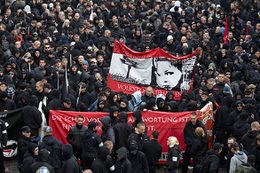
بلجيكا
البوسنة والهرسك
كرواتيا
يعتبر النازيون في كرواتيا هم من أشد النازيين عداوة في أوروبا ضد المسلمين واليهود والشعوب السامية، فهناك الحزب اليميني التابع للاتحاد الديمقراطي الكرواتي الذي يستمد قوته من الحركة الثورية الكرواتية "اوستاشا" التي أسسها أنتي بافليك حيث أسس حزبه الفاشي الكرواتي وتحالف مع الحكومة النازية الألمانية في الحرب العالمية الثانية وتوفي في مدريد سنة 1959.
وقد تكون أسباب هذه العنصرية أسباب سياسية مثل الانتساب لهذا الحزب أو حرب البلقان ضد المسلمين في البوسنة والهرسك أو دوافع دينية مسيحية متطرفة، وعرف عن صربيا أيضا بانتشار النازية هناك بشكل واسع جدا وملحوظ.
إستونيا
فرنسا
ألمانيا
كانت ألمانيا تعتبر منبع الفكر النازي حيث تتواجد هذه الجماعات من جميع فئات الشعب الألماني ومختلف الاعمار في بعض المدن ويتم دعم هذه الجماعات من بعض الأحزاب السياسية التي يوجد لها نفوذ في البرلمان الألماني ومنها الحزب الوطني الاشتراكي الذي يدعم النازية ويحرض على معاداة المهاجرين من الاتراك والعرب والافارقة والأسيويون وترحيلهم من ألمانيا، وقد امتدت هذه العنصرية بالنسبة لأوروپا الغربية حتى وصلت إلى النمسا، فنلندا، السويد، النرويج، الدنمارك، آيسلند، بلجيكا، هولندا، فرنسا.
يمكن التفريق بين مشهدين النازيين الجدد في المانيا ? داخل الدولة الألمانية توقيف خمسة شرطيين بعد تهديد بذبح ابنة محامية تركية 16/12/2018 ؟ مجموعات و أفراد من مواطنين عاديين
اليونان
المجر
 مقالة مفصلة: تاريخ اليهود في المجر
مقالة مفصلة: تاريخ اليهود في المجر
هولندا
پولندا
اقتصرت العنصرية النازية في پولندا بين جماعات الهوليگانز وهم من يشكلون الغالبية من الشباب البولندي وقد تم وصفهم بأنهم الأكثر وحشية من بين هواة تشجيع كرة القدم في أوروبـا، أيضا وقد عرف عن وزير الرياضة البولندي في برنامج روس كمب من قناة ابي بي سي أنه كان عضو سابق من جماعات حليقي الرؤوس وهو الداعم الأكبر لجماعات الهوليجانز في بولندا. وغالبا ما يصادف الأجانب من السياح والأقليات المتواجدة في بولندا من الشرق أوسطيون والآسيويون والأفارقة والمسلمين واليهود بعض المضايقات والنظرات والشتائم من هؤلاء الجماعات وقد تصل إلى العنف أو القتل أحيانا.
وقد تزايدت العنصرية في بولندا أيضا ضد المسلمين والعرب بعد أحداث 11 من سبتمبر والهجمات على أوروبا وتواجد الجيوش البولندلية ببعض دول الشرق.
روسيا

في روسيا حيث يتم دعم هذه الجماعات بالمال والخطابات السرية من الدوما وبعض المسؤولين من الحكومة الروسية والبعض من نواب الكريملن للقضاء على الجاليات والأقليات في روسيا عن طريق بعض المرتزقة والعاطلين عن العمل والشباب وصغار السن والمسرحين من الخدمة العسكرية وخريجي السجون حتى أصبح عددهم في موسكو نصف مليون وأكثر ويتم تدريب هؤلاء على فنون القتال وحرب الشوارع والقتل والاستفزاز والترهيب، وقد حصدت وكالات الأنباء الروسية والعالمية العديد من الأفلام والصور البشعه لهذه الجرائم وبعضها تم عرضه على صفحات الإنترنت واليوتيوب حيث توضح مدى الكراهية الي يكنها ما يطلق عليهم ب "حليقي الرؤوس " الي الاقليات المتواجدة في روسيا عن طريق جرائم القتل والعنف والسرقات ضد الجاليات الشرق اوسطية والافارقة والآسيويون والسياح منهم حتى أصبحت شبه اعتيادية ويومية للشعب الروسي، واخرها فيديو يصور اختطاف اثنان من آسيا الوسطى يتم فيه قطع رأس واحد من الضحايا والآخر يتم قتله عن طريق إطلاق النار على رأسه.
وقد امتد هذا الفكر العنصري بالنسبة لأوروبا الشرقية عن طريق الأتحاد السوفيتي السابق أو المهاجرين الروس أو التأثر بالسياسات الخارجية والداخلية في الوقت الراهن حتى شملت روسيا البيضاء، استونيا، لاتفيا، ليتوانيا، بولندا، أوكرانيا، صربيا، كرواتيا، بلغاريا، التشيك، سلوڤاكيا، وحتى في إسرائيل.
صربيا
السويد
سويسرا
تركيا
أوكرانيا
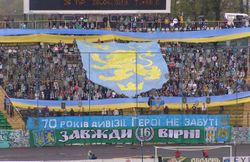
المملكة المتحدة
في المملكة المتحدة يعتبر النازيون الجدد هناك هم غالبيتهم من هواة تشجيع كرة القدم أو ما يطلق عليهم "Hooligaans" الهوليگانز وهم أيضا من حليقي الرؤوس وقد تكون دوافع العداوة والشغب بسبب انتمائهم الشديد لنادي معين أو المنطقة التي ينتمى لها هذا النادي وغالبيتهم العظمى ان لم يكن جميعهم من مدمني الكحول وهواة العراك في الشوارع وأحداث الشغب وتصل أحيانا الي القتل حتى أصبح لهم نمط وتقاليد وأعراف معينه يعيشونها في حياتهم اليومية ويتميزون أيضا في لباسهم التقليدي عن غيرهم من الناس العاديين، وقد أصبحت هذه الفئة تشكل مصدر قلق واحراج كبير الي الحكومة البريطانية والشعب البريطاني بالمناسبات والاحتفالات الأوروبية والعالمية التي تتعلق بموضوع رياضة الرجبي.
آسيا
إسرائيل
منغوليا
ميانمار
تايوان
الأمريكتين
البرازيل
 مقالة مفصلة: العنصرية في البرازيل
مقالة مفصلة: العنصرية في البرازيل
كندا
تشيلي
كوستاريكا
الولايات المتحدة
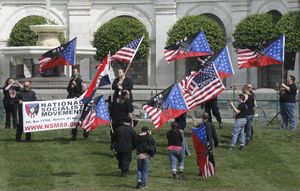
أما النازيون في الولايات المتحدة وغالبيتهم من أصول أوروبية أو المهاجرين من أوروبا فلا يشكلون قوة ظاهرة أو خطر على الجاليات والاقليات هناك ولكن تواجدهم أصبح واضحا بعد أحداث 11 من سبتمبر وكثرة الهجرة الي الولايات المتحدة الأمريكية عن طريق الدول الاتينية والعرب والآسيويون وتنصيب الرئيس الأمريكي باراك اوباما أول زعيم أسود يحكم الولايات المتحدة الأمريكية، حيث كانت العنصرية في الولايات المتحدة تشمل البشرة السوداء وتم القضاء عليها على يد مارتن لوثر كنگ، ومن أشهر الحركات العنصرية في الولايات المتحدة هي كو كلوكس كلان أو ما يطلق عليها اختصارا بالإنگليزية KKK.
انظر أيضاً
- ألكس ليندر
- التاريخ الأمريكي العاشر
- الجنس الآري
- The Believer
- Craig Cobb
- مركز توثيق المقاومة النمساوية
- Esoteric Nazism
- اليمين المتطرف
- عنصرية
- الرايخ الرابع
- إنكار الهولوكوست
- قائمة الفرق النازية الجديدة
- قائمة المنظمات النازية الجديدة
- List of organizations designated by the Southern Poverty Law Center as hate groups
- قائمة المنظمات القومية البيضاء
- National Socialist black metal
- Nazi chic
- Nazi punk
- نازية
- الفاشيون الجدد
- Rock Against Communism
- Romper Stomper
- Stormfront (website)
- Tom Metzger
- القومية البيضاء
- White power skinhead
الهوامش
- ^ Gay, Kathlyn (1997) Neo-Nazis: A Growing Threat. Enslow. p. 114. ISBN 978-0894909016. Quote: "Neo-Nazis ... use fear and violence in their efforts to destroy minorities. Their goal is to establish a "superior" society."(emphasis added)
- ^ Staff (ndg) "Ideologies: Neo Nazi" Archived 12 فبراير 2021 at the Wayback Machine Southern Poverty Law Center. Quote: "While some neo-Nazi groups emphasize simple hatred, others are more focused on the revolutionary creation of a fascist political state." (emphasis added)
- ^ * Werner Bergmann; Rainer Erb (1997). Anti-Semitism in Germany: The Post-Nazi Epoch Since 1945. Transaction Publishers. p. 91. ISBN 978-1-56000-270-3. OCLC 35318351. Archived from the original on 20 February 2021. Retrieved 14 August 2015.
In contrast to today, in which rigid authoritarianism and neo-Nazism are characteristic of marginal groups, open or latent leanings toward Nazi ideology in the 1940s and 1950s
- Martin Polley (2000). A–Z of Modern Europe Since 1789. Routledge. pp. 103. ISBN 978-0-415-18597-4. OCLC 49569961.
Neo-Nazism, drawing heavily both on the ideology and aesthetics of the NSDAP, emerged in many parts of Europe and elsewhere in the economic crises of the 1970s, and has continued to influence a number of small political groups.
- "Neo-Nazism". ApologeticsIndex. 2005-12-16. Archived from the original on 3 January 2006. Retrieved 12 December 2007.
The term Neo-Nazism refers to any social, political and/or (quasi) religious movement seeking to revive Nazism. Neo-Nazi groups are racist hate groups that pattern themselves after Hitler's philosophies. Examples include: Aryan Nations, National Alliance
- Martin Polley (2000). A–Z of Modern Europe Since 1789. Routledge. pp. 103. ISBN 978-0-415-18597-4. OCLC 49569961.
- ^ * Lee McGowan (2002). The Radical Right in Germany: 1870 to the Present. Pearson Education. pp. 9, 178. ISBN 978-0-582-29193-5. OCLC 49785551. Archived from the original on 20 February 2021. Retrieved 14 August 2015.
- Brigitte Bailer-Galanda; Wolfgang Neugebauer. "Right-Wing Extremism in Austria: History, Organisations, Ideology". Archived from the original on 17 January 2012.
Right-wing extremism can be equated neither with Nazism nor with neo-Fascism or neo-Nazism. Neo-Nazism, a legal term, is understood as the attempt to propagate, in direct defiance of the law (Verbotsgesetz), Nazi ideology or measures such as the denial, playing-down, approval or justification of Nazi mass murder, especially the Holocaust.
- Martin Frost. "Neo Nazism". Archived from the original on 27 October 2007.
The term neo-Nazism refers to any social or political movement seeking to revive National Socialism, and which postdates the Second World War. Often, especially internationally, those who are part of such movements do not use the term to describe themselves.
- Lee, Martin A. 1997. The Beast Reawakens. Boston: Little, Brown and Co, pp. 85–118, 214–34, 277–81, 287–330, 333–78. On Volk concept, and a discussion of ethnonationalist integralism, see pp. 215–18
- Brigitte Bailer-Galanda; Wolfgang Neugebauer. "Right-Wing Extremism in Austria: History, Organisations, Ideology". Archived from the original on 17 January 2012.
- ^ * Peter Vogelsang; Brian B. M. Larsen (2002). "Neo-Nazism". The Danish Center for Holocaust and Genocide Studies. Archived from the original on 9 November 2007. Retrieved 2007-12-08.
Neo-Nazism is the name for a modern offshoot of Nazism. It is a radically right-wing ideology, whose main characteristics are extreme nationalism and violent xenophobia. Neo-Nazism is, as the word suggests, a modern version of Nazism. In general, it is an incoherent right-extremist ideology, which is characterised by 'borrowing' many of the elements that constituted traditional Nazism.
- Ondřej Cakl; Klára Kalibová (2002). "Neo-Nazism". Faculty of Humanities at Charles University in Prague, Department of Civil Society Studies. Archived from the original on 26 December 2018. Retrieved 2007-12-08.
Neo-Nazism: An ideology which draws upon the legacy of the Nazi Third Reich, the main pillars of which are an admiration for Adolf Hitler, aggressive nationalism ("nothing but the nation"), and hatred of Jews, foreigners, ethnic minorities, homosexuals and everyone who is different in some way.
- Ondřej Cakl; Klára Kalibová (2002). "Neo-Nazism". Faculty of Humanities at Charles University in Prague, Department of Civil Society Studies. Archived from the original on 26 December 2018. Retrieved 2007-12-08.
- ^ What is right-wing extremism? Archived 16 يونيو 2018 at the Wayback Machine Bundesamt für Verfassungsschutz, n.d., retrieved 4 December 2017 (in English)
- ^ "New Book, Black Sun, Looks at Fringes of National Socialism". Southern Poverty Law Center. 8 February 2015. Archived from the original on 24 November 2020. Retrieved 28 June 2017.
- ^ "Neo-Nazis cloak themselves in eco-rhetoric". DW. 8 February 2015. Archived from the original on 15 August 2018. Retrieved 29 June 2017.
- ^ "Darker Shades of Green". Red Pepper. 8 February 2015. Archived from the original on 15 June 2018. Retrieved 29 June 2017.
- ^ "Fascist Ecology: The "Green Wing" of the Nazi Party and its Historical Antecedents". Peter Staudenmaier. 8 February 2015. Archived from the original on 29 August 2018. Retrieved 29 June 2017.
- ^ أ ب Zubok, V. M. (Vladislav Martinovich) (2007). A failed empire: the Soviet Union in the Cold War from Stalin to Gorbachev. Chapel Hill: University of North Carolina Press. pp. 89–90. ISBN 978-0-8078-3098-7. OCLC 86090559.
- ^ Evans, Richard J. (2008). The Third Reich at War. The Third Reich Trilogy. Penguin Books. pp. 747–48. ISBN 978-0-14-311671-4.
- ^ "About Simon Wiesenthal". Simon Wiesenthal Center. 2013. Section 11. Archived from the original on 26 March 2022. Retrieved 17 November 2013.
- ^ Hartmann, Ralph (2010). "Der Alibiprozeß". Den Aufsatz kommentieren (in الألمانية). Ossietzky 9/2010. Archived from the original on 2 December 2013. Retrieved 19 November 2013.
- ^ Rückerl, Adalbert (1972). NS-Prozesse. Karlsruhe, Germany: Verlag C F Muller. p. 132. ISBN 978-3788020156. Archived from the original on 4 March 2022. Retrieved 8 September 2013.
Adalbert Rückerl, head of the Central Bureau for the Prosecution of National Socialist Crimes observed that because of the 1968 Dreher's amendment (§ 50 StGB), 90% of all Nazi war criminals in Germany enjoyed total immunity from prosecution.
- ^ Lõwy, Michael (1998) Fatherland Or Mother Earth?: Essays on the National Question Archived 6 أغسطس 2020 at the Wayback Machine Pluto Press. pp. 65–66 ISBN 978-0745313436
- ^ Fuchs, Christian (2018). "Racism, Nationalism and Right-Wing Extremism Online: The Austrian Presidential Election 2016 on Facebook". In Morelock, Jeremiah (ed.). Critical Theory and Authoritarian Populism. University of Westminster Press. p. 165. ISBN 978-1-912656-04-2.
- ^ Laqueur, Walter, Fascism: Past, Present, Future, pp. 80, 116, 117
- ^ Laqueur, Walter, Fascism: Past, Present, Future, pp. 117–18
- ^ "Austria's Haider dies in accident". BBC News. 2008-10-11. Archived from the original on 12 July 2018. Retrieved 2010-05-20.
- ^ "Austria spooked by Nazi past in election". BBC News. 2010-04-23. Archived from the original on 26 April 2010. Retrieved 2010-05-20.
- ^ "Reich mother on the march in Hitler's homeland". The Independent. London. 2010-04-24. Archived from the original on 27 April 2010. Retrieved 2010-05-20.
المراجع
المراجع الأساسية
- Imperium by Francis Parker Yockey (using the pen name Ulick Varange, 1947, ISBN 0-911038-10-8)
- The Lightning and the Sun by Savitri Devi, (1958 (written 1948–56); ISBN 0-937944-14-9)
- White Power by George Lincoln Rockwell (1967; John McLaughlin, 1996, ISBN 0-9656492-8-8)
- This Time The World by George Lincoln Rockwell (1961; Liberty Bell Publications, 2004, ISBN 1-59364-014-5)
- National Socialism: Vanguard of the Future, Selected Writings of Colin Jordan (ISBN 87-87063-40-9)
- Merrie England– 2000 by Colin Jordan
- The Turner Diaries by William Pierce (under the pseudonym Andrew Macdonald), novel (1978, ISBN 1-56980-086-3) .
- Siege: The Collected Writings of James Mason edited and introduced by Michael M. Jenkins (Storm Books, 1992) or introduced by Ryan Schuster (Black Sun Publications, ISBN 0-9724408-0-1)
- Hunter by William Pierce (under the pseudonym Andrew Macdonald), novel (National Vanguard Books, 1984, ISBN 0-937944-09-2)
- Faith of the Future by Matt Koehl (New Order; Rev edition, 1995, ISBN 0-9648533-0-2)
- Serpent's Walk by Randolph D. Calverhall (pseudonym), novel (National Vanguard Books, 1991, ISBN 0-937944-05-X)
- The Nexus periodical edited by Kerry Bolton
- Deceived, Damned & Defiant– The Revolutionary Writings of David Lane by David Lane, foreword by Ron McVan, preface by Katja Lane (Fourteen Word Press, 1999, ISBN 0-9678123-2-1)
- Resistance Magazine published by National Vanguard Books
مسوحات أكاديمية
- The Beast Reawakens by Martin A. Lee, (New York: Little, Brown and Company, 1997, ISBN 0-316-51959-6)
- Fascism (Oxford Readers) by Roger Griffin (1995, ISBN 0-19-289249-5)
- Beyond Eagle and Swastika: German nationalism since 1945 by Kurt P. Tauber (Wesleyan University Press; [1st ed.] edition, 1967)
- Biographical Dictionary of the Extreme Right Since 1890 edited by Philip Rees, (1991, ISBN 0-13-089301-3)
- Hitler's Priestess: Savitri Devi, the Hindu-Aryan Myth, and Neo-Nazism by Nicholas Goodrick-Clarke (1998, ISBN 0-8147-3111-2 and ISBN 0-8147-3110-4)
- Dreamer of the Day: Francis Parker Yockey and the Postwar Fascist International by Kevin Coogan, (Autonomedia, Brooklyn, NY 1998, ISBN 1-57027-039-2)
- Hate: George Lincoln Rockwell and the American Nazi Party by William H. Schmaltz (Potomac Books, 2000, ISBN 1-57488-262-7)
- American Fuehrer: George Lincoln Rockwell and the American Nazi Party by Frederick J. Simonelli (University of Illinois Press, 1999, ISBN 0-252-02285-8)
- Fascism in Britain: A History, 1918–1985 by Richard C. Thurlow (Olympic Marketing Corp, 1987, ISBN 0-631-13618-5)
- Fascism Today: A World Survey by Angelo Del Boca and Mario Giovana (Pantheon Books, 1st American edition, 1969)
- Swastika and the Eagle: Neo-Naziism in America Today by Clifford L Linedecker (A & W Pub, 1982, ISBN 0-89479-100-1)
- The Silent Brotherhood: Inside America's Racist Underground by Kevin Flynn and Gary Gerhardt (Signet Book; Reprint edition, 1995, ISBN 0-451-16786-4)
- "White Power, White Pride!": The White Separatist Movement in the United States by Betty A. Dobratz with Stephanie L. Shanks-Meile (hardcover, Twayne Publishers, 1997, ISBN 0-8057-3865-7); a.k.a. The White Separatist Movement in the United States: White Power White Pride (paperback, Johns Hopkins Univ. Press, 2000, ISBN 0-8018-6537-9)
- Encyclopedia of White Power: A Sourcebook on the Radical Racist Right by Jeffrey Kaplan (Rowman & Littlefield Pub Inc, 2000, ISBN 0-7425-0340-2)
- Blood in the Face: The Ku Klux Klan, Aryan Nations, Nazi Skinheads, and the Rise of a New White Culture by James Ridgeway (Thunder's Mouth Press; 2nd edition, 1995, ISBN 1-56025-100-X)
- A Hundred Little Hitlers: The Death of a Black Man, the Trial of a White Racist, and the Rise of the Neo-Nazi Movement in America by Elinor Langer (Metropolitan Books, 2003, ISBN 0-8050-5098-1)
- The Racist Mind: Portraits of American Neo-Nazis and Klansmen by Raphael S. Ezekiel (Penguin (Non-Classics); Reprint edition, 1996, ISBN 0-14-023449-7)
- Black Sun: Aryan Cults, Esoteric Nazism and the Politics of Identity by Nicholas Goodrick-Clarke (2001, ISBN 0-8147-3155-4)
- Free to Hate: The Rise of the Right in Post-Communist Eastern Europe by Paul Hockenos (Routledge; Reprint edition, 1994, ISBN 0-415-91058-7)
- The Dark Side of Europe: The Extreme Right Today by Geoff Harris, (Edinburgh University Press; New edition, 1994, ISBN 0-7486-0466-9)
- The Far Right in Western and Eastern Europe by Luciano Cheles, Ronnie Ferguson, and Michalina Vaughan (Longman Publishing Group; 2nd edition, 1995, ISBN 0-582-23881-1)
- The Radical Right in Western Europe: A Comparative Analysis by Herbert Kitschelt (University of Michigan Press; Reprint edition, 1997, ISBN 0-472-08441-0)
- Shadows Over Europe: The Development and Impact of the Extreme Right in Western Europe edited by Martin Schain, Aristide Zolberg, and Patrick Hossay (Palgrave Macmillan; 1st edition, 2002, ISBN 0-312-29593-6)
- The Fame of a Dead Man's Deeds: An Up-Close Portrait of White Nationalist William Pierce by Robert S. Griffin (Authorhouse, 2001, ISBN 0-7596-0933-0)
- Nation and Race: The Developing Euro-American Racist Subculture by Jeffrey Kaplan, Tore Bjorgo (Northeastern University Press, 1998, ISBN 1-55553-331-0)
- Gods of the Blood: The Pagan Revival and White Separatism by Mattias Gardell (Duke University Press, 2003, ISBN 0-8223-3071-7)
- The Nazi conception of law (Oxford pamphlets on world affairs) by J. Walter Jones, Clarendon (1939)
- Hearst, Ernest, Chip Berlet, and Jack Porter. “Neo-Nazism.” Encyclopaedia Judaica. Eds. Michael Berenbaum and Fred Skolnik. Vol. 15. 2nd ed. Detroit: Macmillan Reference USA, 2007. 74–82. 22 vols. Thomson Gale.
- Goodrick-Clark, Nicholas (2002). Black Sun: Aryan Cults, Esoteric Nazism and the Politics of Identity. New York: New York University Press. ISBN 0-8147-3155-4. OCLC 47665567.
- Blee, Kathleen (2002). Inside Organized Racism: Women in the Hate Movement. Berkeley, California; London: University of California Press. ISBN 0-520-24055-3. OCLC 52566455.
وصلات خارجية
- Mainstreaming Neo-Nazism
- Rjabchikov, S.V., 2014. The Nazi Orders in the So-called "Donetsk People's Republic". The paper was read on the scientific session of the Sergei Rjabchikov Foundation – Research Centre for Studies of Ancient Civilisations and Cultures, September 29, 2014, Krasnodar, Russia
- Antisemitism And Racism in the Baltic Republics
- The history of modern fascism
- The Hate Directory a collection of monitored neo-Nazi web sites
- The Neo-Nazi Movement, Southern Poverty Law Center (SPLC)
خطأ استشهاد: وسوم <ref> موجودة لمجموعة اسمها "nb"، ولكن لم يتم العثور على وسم <references group="nb"/>
- CS1 الألمانية-language sources (de)
- Short description matches Wikidata
- Articles containing ألمانية-language text
- Articles with hatnote templates targeting a nonexistent page
- Articles with unsourced statements from October 2018
- Articles with unsourced statements from December 2017
- Articles with unsourced statements from June 2020
- Articles needing additional references from May 2022
- All articles needing additional references
- Articles containing فرنسية-language text
- Articles containing هولندية-language text
- Pages using div col with unknown parameters
- معاداة السامية
- عنف ضد المثليين
- نازية جديدة
- فاشية جديدة
- عنصرية
- نظريات سياسية
- حركات سياسية
